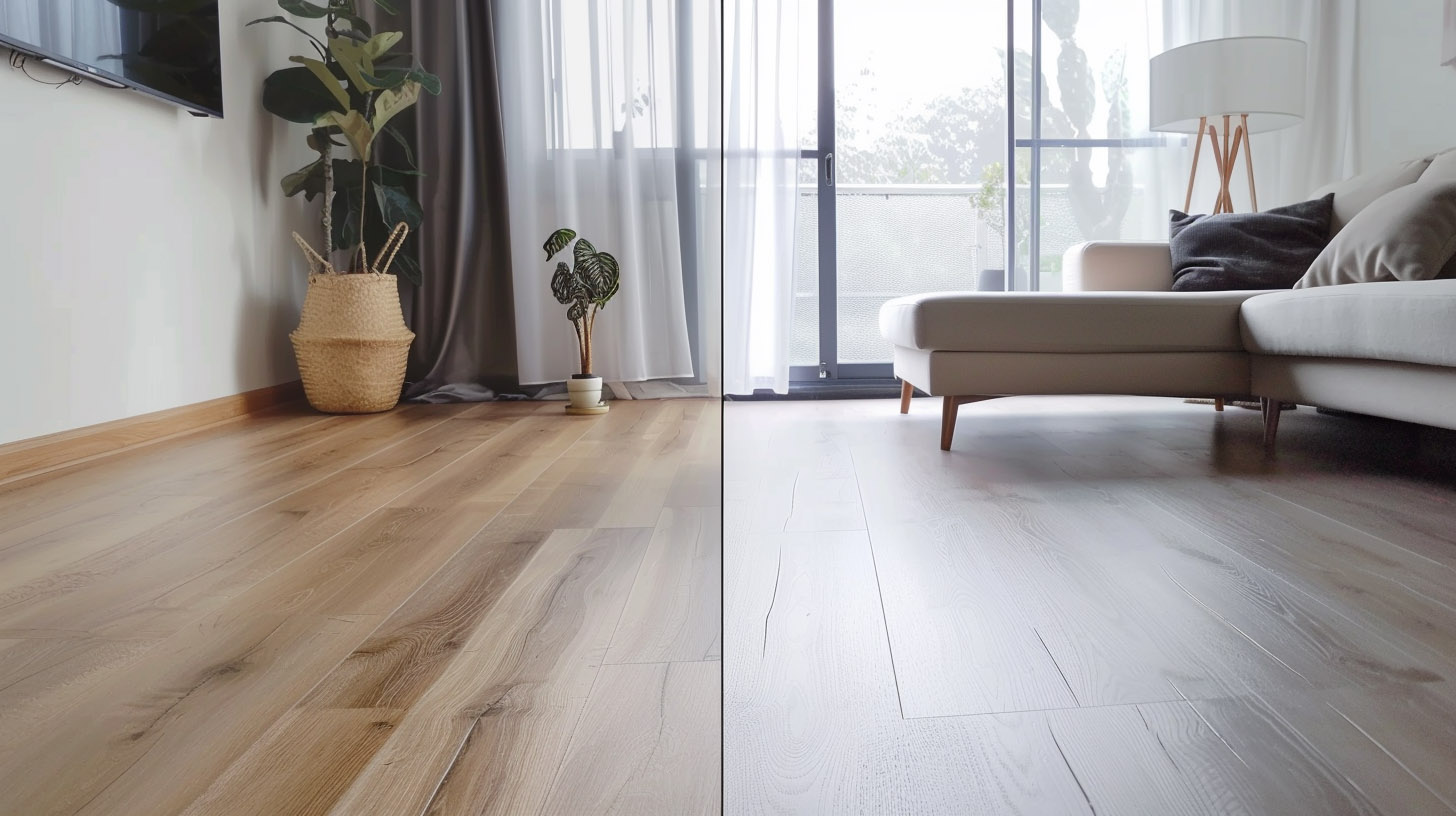
Vinyl flooring is a popular choice for many homeowners due to its affordability, durability, and ease of installation. But what happens if you need to replace or remove the vinyl flooring? Is it possible to reinstall vinyl flooring after removing it, or does the process require new materials? In this article, we’ll explore the intricacies of reinstalling vinyl flooring, how to remove it without causing damage, and the best practices for reconnecting and restoring your vinyl floor.
Snippet paragraph: While it’s possible to remove vinyl flooring and reinstall it, the process is not always straightforward. Factors such as the type of vinyl flooring, installation method, and condition of the material will determine whether it can be reused.
Can Vinyl Flooring Be Removed and Reinstalled?
Yes, in some cases, vinyl flooring can be removed and reinstalled, but it depends on several factors such as the type of vinyl, installation method, and the condition of the floor after removal.
Types of Vinyl Flooring
- Glue-Down Vinyl Flooring: This type of vinyl flooring is installed using adhesive, which can make removal more challenging. When you pull up glue-down vinyl flooring, there’s a risk of tearing or warping the material, which can make reinstalling it difficult.
- Click-Lock Vinyl Flooring: With click-lock vinyl planks, the process is much easier. Since the flooring is not glued or nailed down, you can typically remove and reinstall it without damaging the planks. However, it’s essential to handle the planks carefully to avoid damage during removal.
- Loose Lay Vinyl Flooring: This type of vinyl is designed to be laid down without adhesive, and it’s relatively easy to remove and reinstall. Because there is no glue or lock system, it is more flexible and can be reused with minimal effort.
Key Considerations for Reinstallation
- Condition of the Subfloor: When reinstalling vinyl flooring, ensure that the subfloor remains in good condition. Any damage or imperfections will affect the new installation, potentially causing the vinyl to warp or shift.
- Handling the Vinyl: Be sure to handle the vinyl flooring carefully when removing it. Pulling or tearing it can make it impossible to reuse.
Can You Remove Vinyl Flooring Without Damaging It?
Removing vinyl flooring without damaging it requires careful planning and execution. While some types of vinyl flooring are easier to remove than others, all require patience and the right tools.
Steps for Safe Vinyl Removal:
- Prepare the Area: Clear the room of furniture and any obstacles that could interfere with the removal process.
- Use the Right Tools: You’ll need a utility knife, pry bar, adhesive remover (for glue-down flooring), and possibly a heat gun or hairdryer for stubborn areas.
- Cut the Vinyl: For glued-down vinyl, use the utility knife to cut the floor into manageable sections. Be cautious not to damage the subfloor underneath.
- Remove Adhesive: For glue-down floors, use an adhesive remover to clean up any leftover glue. A floor scraper can help remove stubborn patches of adhesive.
- Clean the Subfloor: Ensure the subfloor is smooth and level before reinstalling. Any debris or uneven spots could affect the new installation.
By taking these steps, you’ll increase the chances of successfully removing the vinyl flooring without causing damage. However, keep in mind that vinyl flooring, especially glue-down or older types, may not be as durable after removal What tools are required for removing vinyl flooring?1.
How Do You Reconnect Vinyl Flooring?
When reinstalling vinyl flooring, especially click-lock or loose lay vinyl, reconnecting the planks is a relatively straightforward process.
Steps to Reconnect Vinyl Planks:
- Align the Planks: Start by laying the first row of planks along one edge of the room. Ensure the planks are properly aligned.
- Interlock the Planks: For click-lock vinyl flooring, align the edges of each plank at a 45-degree angle, then gently lower the plank until it clicks into place.
- Trim Edges if Needed: If the floor doesn’t fit perfectly around the edges, use a utility knife to trim the planks.
- Check for Gaps: Ensure there are no gaps between the planks. If needed, use a rubber mallet to tap the planks gently into place.
This process is relatively easy with click-lock and loose-lay vinyl. However, with glue-down floors, you’ll need to reapply adhesive and ensure the planks are carefully pressed down into place Can Vinyl Flooring Be Removed and Reinstalled?2.
Can Vinyl Flooring Be Restored?
In some cases, vinyl flooring can be restored, depending on the extent of the wear and tear.
Steps to Restore Vinyl Flooring:
- Clean the Floor: Thoroughly clean the vinyl floor to remove dirt, grime, and any other debris. A simple solution of mild soap and water can help.
- Repair Scratches and Dents: Small scratches and dents can be repaired using a vinyl repair kit. For deeper damage, consider applying a vinyl floor patch or filler.
- Refinish the Surface: If the floor looks dull, apply a vinyl floor polish or wax to restore its shine.
- Resealing (if necessary): If your vinyl is a glue-down variety, and the adhesive has worn out, you may need to reapply a layer of adhesive to ensure the floor stays in place.
While vinyl flooring can be restored to some extent, it’s important to remember that deeply worn or damaged vinyl may need to be replaced entirely Can You Remove Vinyl Flooring Without Damaging It?3.
Conclusion
Reinstalling vinyl flooring is possible, but success depends on the type of vinyl, how carefully it was removed, and the condition of both the vinyl and the subfloor. Click-lock and loose-lay vinyl are generally easier to reinstall without damage, while glue-down vinyl may pose more challenges. By following proper removal and reinstallation techniques, and considering whether restoration is possible, homeowners can extend the life of their vinyl floors.
Ultimately, while vinyl flooring can often be removed and reinstalled, it may not always be practical depending on the flooring type and condition. If you’re planning to reuse your vinyl floor, ensure you handle it carefully during removal and check that the subfloor is in optimal condition before reinstalling.
Footnotes:
-
Get information on the right tools needed to remove vinyl flooring without damaging the subfloor. ↩
-
Learn the proper techniques and tools to remove adhesive from glue-down vinyl flooring without damaging the surface. ↩
-
Discover the steps and considerations involved in reinstalling vinyl flooring, including the type of vinyl and proper reinstallation methods. ↩


